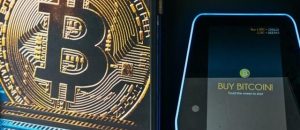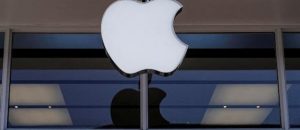federal reserve Chair Jerome Powell said Monday that the US public needs to understand the risks behind Bitcoin and other crypto currencies, even as the central bank itself is studying the potential costs and benefits of a digital dollar.
Powell said the Fed prefers to call crypto coins crypto assets, because their volatility undermines their ability to store value, a basic function of a currency.
displayConBanner=1;
They're highly volatile, see Bitcoin, and therefore not really useful as a store of value, Powell said in remarks to a virtual summit hosted by the Bank for International Settlements.
They're more of an asset for speculation. So they're also not particularly in use as a means of payment…It's essentially a substitute for gold rather than for the dollar.
Bitcoin has soared nearly ten-fold in value compared with a year ago, hovering around $57,000 on Monday. That is up from $5,830 in March 2020. It is often seen as a hedge against inflation, and inflation fears have risen as the Fed has kept its short-term benchmark interest rate pegged near zero for the past year.
The Fed is also injecting $120 billion into the banking system each month by purchasing Treasurys and mortgage-backed securities.
While Bitcoin is rarely used in transactions, that could change. Electric car maker Tesla said last month that it was buying $1.5 billion of Bitcoin and would soon accept Bitcoin payment for its cars.
Powell also said the Fed is researching the potential for a central bank digital currency, though he added that the Fed is not yet near a decision about implementing one.
We're not in a mode of trying to make a decision at this point, he said. We are experimenting with technology.
But Powell added that given the dollar's critical role as the world's leading reserve currency, the Fed has an obligation to be on the cutting edge of understanding the costs and benefits of a central bank digital currency, or CBDC.
At the same time, Powell said there was no need for the Fed to rush or be first to market. Many other central banks are exploring CBDCs, including China's, and some observers worry China is ahead of the US.
Powell said the Fed is conducting research through an in-house technology lab, and also collaborating with MIT through the Federal Reserve Bank of Boston, one of its 12 regional Fed banks.
The real threshold question for us is, does the public want or need a new digital form of central bank money to complement what is already a highly efficient, reliable and innovative payments oriented system? Powell asked.
There are risks and benefits to digital currencies, the Fed chair said. The benefits include a more efficient, more inclusive payment system, while the risks involve cyber attacks, money laundering and terrorist financing.
There is also the risk that a digital currency could be held by individuals electronically and could therefore bypass banks.
We don't want to compete with banks for funding, Powell said.
Ultimately, Powell said Congress would likely need to pass legislation allowing a CBDC before the Fed would create one.
We would not proceed with this without support from Congress, and I think that would ideally come in the form of an authorising law, Powell said.
The Fed chair also expressed some concerns about so-called stablecoins, which are digital currencies that are pegged to the value of government-backed currencies such as the dollar or euro. facebook's Libra, which it now calls Diem, is an example of a stablecoin.
The potentially fast and wide adoption of a global stablecoin, potentially a global currency governed only by the incentives of a private company, is something that will deserve and will receive the highest level of regulatory expectations, Powell said. Private stable coins are not going to be an appropriate substitute for a sound monetary system based in central bank money.
(Only the headline and picture of this report may have been reworked by the Business Standard staff; the rest of the content is auto-generated from a syndicated feed.)






